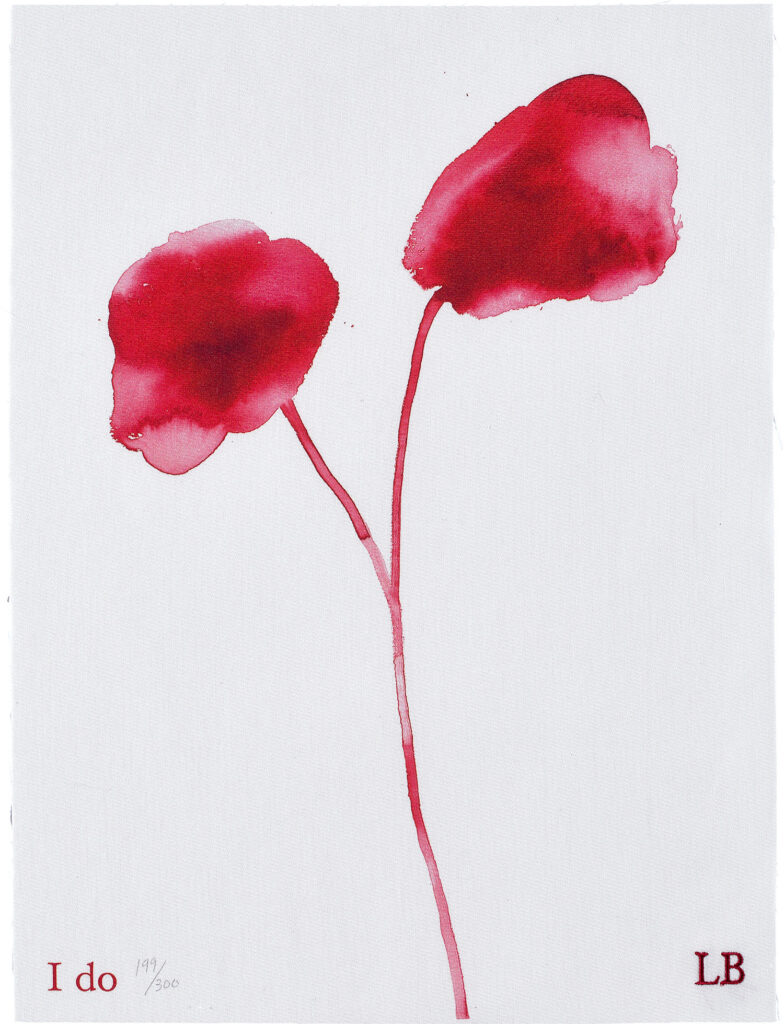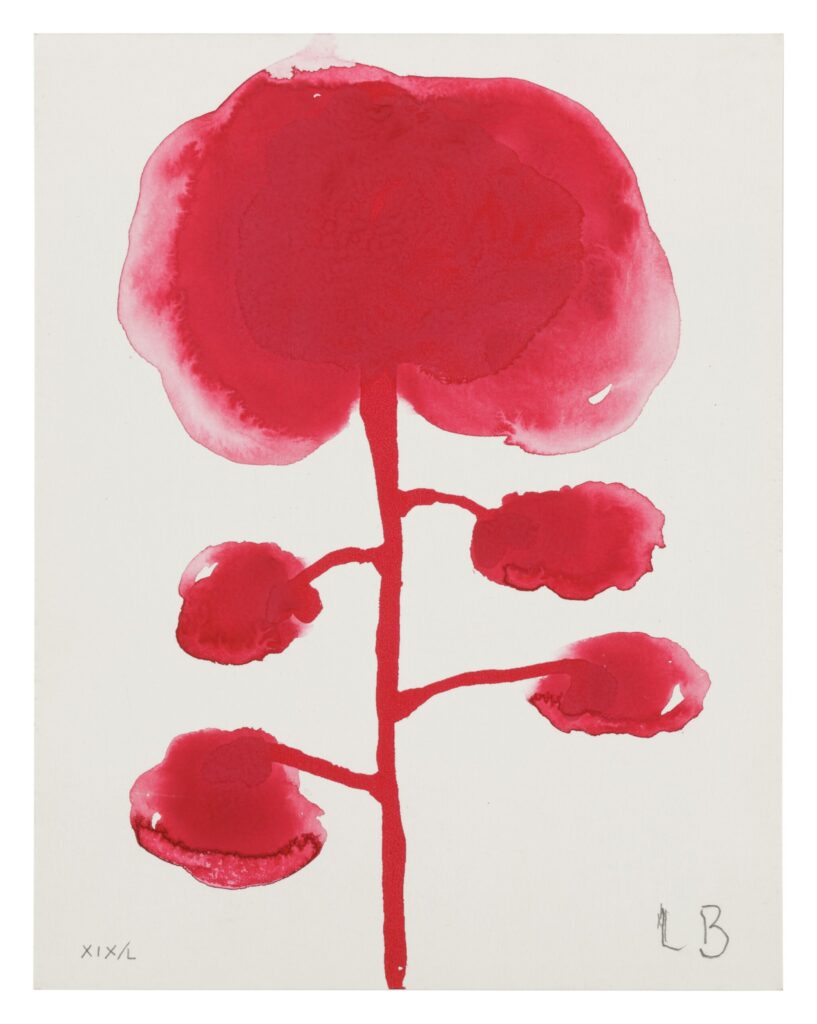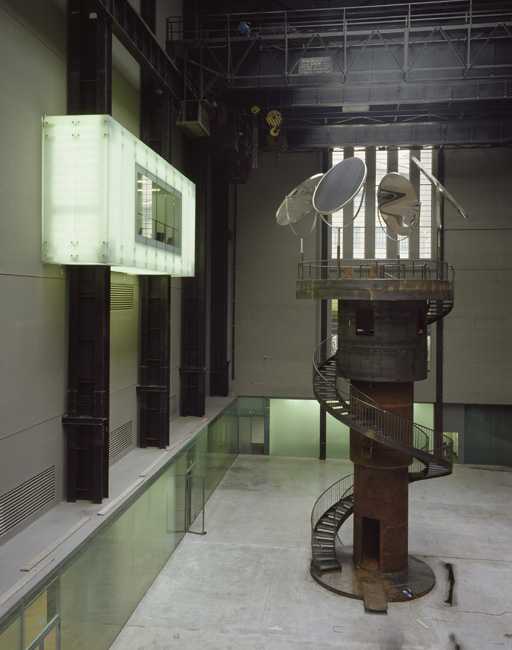What a document, what a moment.

On May 11, 2010, Freedom To Marry announced the release of I do, an edition by Louise Bourgeois, which the artist donated to raise $300,000 for the campaign to recognize gay marriage in the United States.

The edition of 300 numbered inkjet prints on fabric, with the artist’s monogram embroidered in the corner, depicted a pair of flowers, perhaps poppies, on a single, joined stem. It was similar to the print Bourgeois sent out as a holiday gift in 2009. Which was, in turn, related to a sprawling series of gouache paintings of flowers the artist made in 2009, one at a time, quickly, wet-on-wet, standing at the butcher block counter of her Chelsea home & studio.

“Everyone should have the right to marry. To make a commitment to love someone forever is a beautiful thing,” Bourgeois would surely have said again at the unveiling of the Freedom To Marry print at Cheim & Read on June 22nd, had she not died on May 31st, at the age of 98.
By 2010 Freedom To Marry and the marriage equality movement had faced wins and losses in various states, and had directed their focus to passing marriage equality legislation in New York. On May 22nd, Andrew Cuomo entered the NY governor’s race against David Paterson, the former Lt Governor who’d replaced Eliot Spitzer, after he resigned following a sex scandal. Cuomo campaigned on marriage equality, won against a truly awful Republican, and made marriage equality the law in 2011. This section of Freedom To Marry’s history of the movement is probably the best thing anyone will ever say about Andrew Cuomo ever again.
Point is, in May 2010 Freedom To Marry was basically fundraising to get Andrew Cuomo elected, and to lobby Democrats in Washington to support marriage equality. Which, most did, eventually, and then the Supreme Court recognized a national right to marriage equality in 2015.
Included with each edition of I do was a one-sheet explaining the work; it’s numbered, but it seems weird to call it a certificate. It includes instructions for handling, ironing [!] and framing the fragile work:
The edge of I do is unseamed and will fray if handled incorrectly. If wrinkled and need to press before framing, please use a DRY iron (no stream, no water) with a cloth between the print and the iron or the archival ink will run…This print is meant to float, with a small X stitch in each corner securing it to an archival backing board.
What is billed as archival sure sounds pretty fragile. Fifteen years later, these care instructions seem to have gone almost universally unheeded by the stewards of Bourgeois’ I do prints. Cuomo has resigned in disgrace and returned in corruption, seeking to become mayor of a city he hates. A rogue Supreme Court and corrupt administration plot with extremists to strip marriage rights from millions of families.

In 2000, Louise Bourgeois was the first artist commissioned to fill the Turbine Hall at Tate Modern. Her large spider sculpture Maman was only one aspect of her installation, which also included three metal towers encircled by spiral staircases. Each tower comprised a sculptural vignette of mother & child, and a viewing platform with giant mirrors reflecting viewers to other viewers around the hall in an interconnected web of public and private spectacle. The three towers were titled, respectively, I Do, I Undo, and I Redo.
